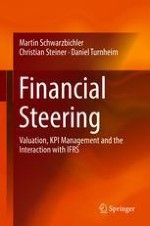2018 | OriginalPaper | Buchkapitel
3. WACCs and Hurdle Rate
verfasst von : Martin Schwarzbichler, Christian Steiner, Daniel Turnheim
Erschienen in: Financial Steering
Aktivieren Sie unsere intelligente Suche, um passende Fachinhalte oder Patente zu finden.
Wählen Sie Textabschnitte aus um mit Künstlicher Intelligenz passenden Patente zu finden. powered by
Markieren Sie Textabschnitte, um KI-gestützt weitere passende Inhalte zu finden. powered by
